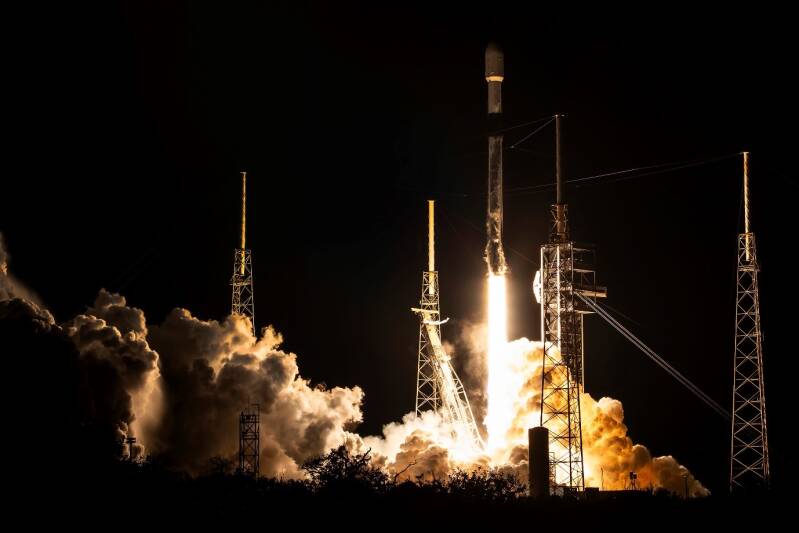SpaceX has started 2025 on a high note with the successful launch of its first Falcon 9 mission of the year, carrying the advanced Thuraya 4-NGS satellite into orbit. The rocket lifted off from Space Launch Complex 40 at Cape Canaveral Space Force Station in Florida at 8:27 p.m. EST on Jan. 3 (0127 GMT, Jan. 4).

Credit: SpaceX
Thuraya 4: Enhancing Global Connectivity
The Thuraya 4 satellite, operated by Space42, a UAE-based satellite services provider, is set to transform mobile communications across Europe, the Middle East, Africa, and Central Asia. Built by Airbus on its state-of-the-art Eurostar Neo platform, the satellite features cutting-edge technology, including:
A 12-meter L-band antenna for wide-reaching connectivity.
An advanced payload capable of processing up to 3,200 channels with dynamic power allocation across numerous spot beams.
Enhanced flexibility and efficiency to support next-generation telecommunications services.
The satellite will boost Thuraya's L-band business, offering increased coverage and capacity, and improving services for government, enterprise, and defense sectors. It also aims to expand Thuraya’s presence in maritime, IoT, and data solutions markets with unmatched throughput capabilities and
market-leading speeds.
Ali Al Hashemi, CEO of Yahsat Space Services, one of Space42’s parent companies, stated that the satellite's technologies would "unlock innovative AI-powered services," driving the next phase of growth for the company.

Credit: Airbus Defence and SpaceX
A Milestone Mission for SpaceX
The Falcon 9 rocket completed a flawless launch, deploying the Thuraya 4-NGS satellite into a geostationary transfer orbit approximately 35 minutes and 30 seconds after liftoff. From there, the satellite will ascend to geosynchronous orbit, where it will maintain a fixed position above Earth.
Eight minutes and 40 seconds after launch, the Falcon 9’s first stage successfully landed on the droneship "A Shortfall of Gravitas" stationed in the Atlantic Ocean. This marks the booster’s 20th flight and recovery, an impressive milestone for SpaceX’s reusability program.
The booster, which had previously flown on missions including the ill-fated ispace Hakuto-R moon lander, an International Space Station (ISS) resupply mission, and 13 Starlink satellite batches, demonstrated the robustness and reliability of SpaceX's reusable launch system.
With this mission, SpaceX has achieved its 341st orbital-class booster recovery, a testament to the company’s leadership in cost-effective and sustainable spaceflight.
SpaceX’s 2025 Ambitions
The Thuraya 4 mission marks SpaceX’s 418th Falcon 9 launch and its 435th mission overall. Following a record-breaking year in 2024, with over 130 orbital launches, SpaceX is expected to surpass that number in 2025.
The company's continued pace of launches highlights its growing dominance in the commercial space sector. With missions ranging from satellite deployments and ISS resupply runs to ambitious lunar and Mars-related projects, SpaceX remains at the forefront of space exploration and innovation.
A Bright Future for Space42 and Thuraya
As the Thuraya 4 satellite begins its operational journey, it promises to revolutionize connectivity for diverse industries across its coverage regions. By leveraging the latest advancements in satellite technology, Space42 and Thuraya are poised to drive significant growth in mobile communications, reinforcing the UAE’s leadership in space and telecommunications innovation.
This launch underscores the increasing collaboration between space pioneers like SpaceX and emerging global players like Space42, setting the stage for a transformative year in space exploration and technology.


Add comment
Comments